It’s no secret that constructing a well-developed again entails loads of pulling workout routines and sufficient protein to assist your strength- and muscle-building efforts. Whereas there are completely different routes you possibly can take to attain that sculpted look, the best back workouts revolve round a traditional pull-day staple: the row.
The variety of row variations to select from could really feel overwhelming, however you possibly can’t go unsuitable with two of the best choices: the chest-supported row and the bent-over row. However what reigns supreme within the battle between a bench-based again builder and a freestanding barbell motion?
We’ll dive deeper into their variations and similarities, break down how you can carry out every one safely, and talk about the advantages and downsides of each so you will get probably the most bang to your buck throughout your subsequent pull-day session.
Desk of Contents
Key Variations
- The bent-over row entails your entire posterior chain and requires important core activation. However, the chest-supported row recruits your upper-back muscular tissues whereas principally eradicating your decrease half from the equation.
- The chest-supported row is usually safer for each novices and superior lifters for the reason that weight bench supplies stability and safety to your backbone. In the meantime, the shortage of help with a bent-over row can restrict the consumer’s skill to correctly have interaction the again since they’re directing effort to stabilize their physique in a bent-over place.
- Not like the chest-supported row, the bent-over model straight carries over to different actions just like the deadlift and good mornings, because it teaches you how you can hip-hinge accurately.
[Related: Lat Pulldown vs. Pull-Up: The Battle for a Bigger Back]
Key Similarities
- Each row variations primarily work the latissimus dorsi (lats), making both motion a improbable alternative to your again or pull-day exercise.
- Your grip strength might be put to the check with every train. Rowing will make it easier to develop a stronger grip (and forearms), which may repay when performing workout routines like cleans, snatches, and shrugs. (When you’re making an attempt to focus on your again muscular tissues and your grip power is a limiting issue, take a look at our record of the best lifting straps.)
- The bent-over row and the chest-supported row may help add thickness and total dimension to your upper- and mid-back, particularly for those who range your grip to focus on particular areas.
Muscular tissues Labored
Just like the bent-over row, the chest-supported row entails a number of upper-back muscular tissues — primarily the latissimus dorsi (lats), trapezius (traps), and rhomboids. Your lats, that are the most important again muscular tissues, are the principle mover throughout any row variation. In the meantime, your traps assist stabilize your scapula, and the rhomboids play an vital function in shoulder stabilization.
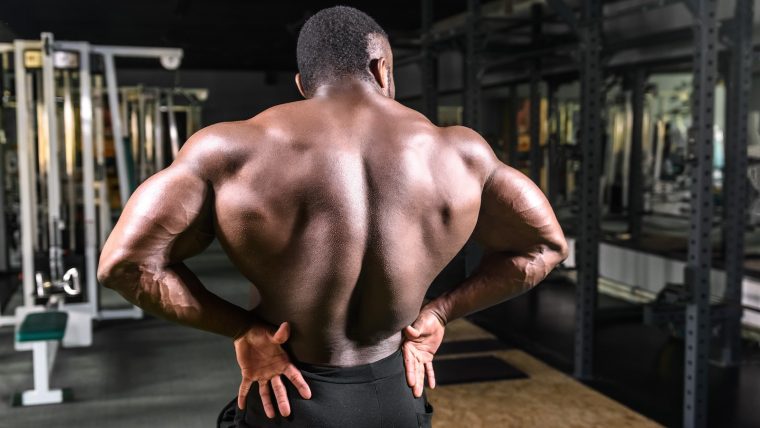
Along with your lats, traps, and rhomboids, your posterior deltoids — the again shoulder muscular tissues that connect to your shoulder blades — additionally act as prime movers in the course of the bent-over row and the chest-supported row. Plus, each row variations contain ample biceps activation, as this two-headed muscle assists with flexing your forearm and elbow. As you retract your shoulder blades throughout a row, your biceps assist your arm bend on the high of the motion. You can even improve the stimulus by utilizing a supinated (palms-up) grip.
Nonetheless, the bent-over row entails a number of muscle teams and joint constructions that the chest-supported model doesn’t. Most notably, this multi-joint motion recruits your hamstrings, glutes, and spinal erectors to stop any rounding as you pull the barbell towards your physique from a hip-hinge place. Total, your legs and core should put in an equal quantity of effort as your higher physique to carry out this train safely and successfully.
[Related: What Muscles Do Push-Ups Work? Get More Out of This Timeless Exercise]
When to Do the Chest-Supported Row
Generally, selecting a chest-supported row merely makes extra sense. Whether or not you’re new to lifting, therapeutic from an harm, or seeking to goal particular components of your again, listed below are a couple of eventualities the place a chest-supported row works greatest:
You’re a Newbie
Simply began power coaching? Moderately than danger getting damage performing a extra technical motion, persist with the model higher suited to novices. The chest-supported row teaches you how you can have interaction your core and excellent your pulling method from a seated place that retains your backbone secure.
Whereas you could have to begin with lighter dumbbells, you possibly can shortly improve the load for those who stay constant along with your strategy. Plus, the chest-supported row provides you an opportunity to learn the way altering variables comparable to your grip, the angle of the load bench, and time below rigidity can have an effect on your outcomes. For instance, an overhand (pronated) grip will result in extra rear delt and upper-back activation since your elbows come out out of your physique. An underhand (supinated) grip retains the elbows nearer, forcing your traps and biceps to step up their recreation.
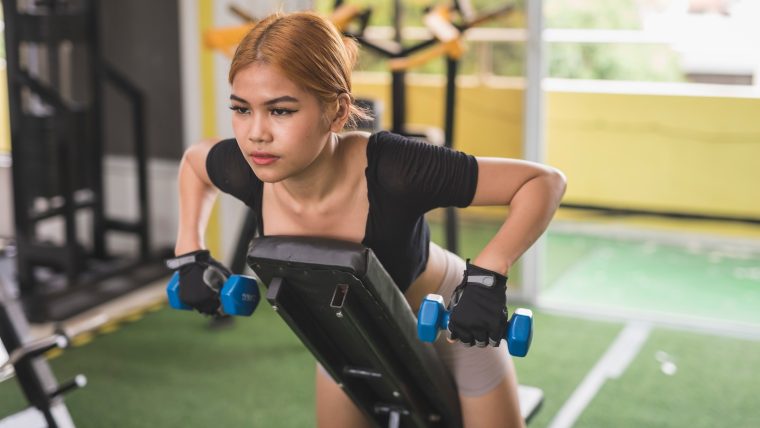
You’re Working Your Means Again From Damage
When you’ve been sidelined by a again harm and are able to resume coaching, the chest-supported row is a brilliant alternative. Utilizing a bench for assist decreases the strain in your backbone and core, permitting you to concentrate on performing the motion utilizing exact method.
Begin with lighter weights to set your self up for long-term success by rebuilding your power, stamina, and confidence one rep at a time.
You’re Chasing Bodybuilding or Physique Targets
If you wish to develop a extra outlined, muscular again, the chest-supported row permits you to goal your lats, rhomboids, and traps with out your decrease again and core being a limiting issue. In spite of everything, sustaining a hinged place whereas rowing a heavy load could be very tiring.
From there, you possibly can tailor the train to assist your physique targets by going heavier, altering the tempo, altering the incline angle, or experimenting with completely different set and rep ranges. Both manner, the chest-supported row stands out as an apparent alternative if you wish to isolate sure muscular tissues on again day.
When to Do the Bent-Over Row
There’s a purpose the bent-over row is close to the highest of each best back exercise list: it produces outcomes. From athletes aiming to get extra explosive to individuals who have to develop stronger posterior chains to lifters on the lookout for a approach to develop a much bigger again, listed below are conditions the place you can also make the bent-over row the star of the present.
You’re Coaching for Olympic Weightlifting or Powerlifting
All power and energy athletes ought to embody a bent-over row variation of their routine. Olympic weightlifters can profit from this train by utilizing it as a primer for the clear and jerk, which requires explosive motion and a powerful higher again.
Plus, powerlifters who need to improve their deadlift PR also can make the most of the bent-over row to assist attain that aim. Getting snug with hinging on the hips, mastering how you can brace your core, and studying how you can absolutely have interaction your lats and different again muscular tissues will solely make it easier to carry out even higher when it’s time to step as much as the barbell.
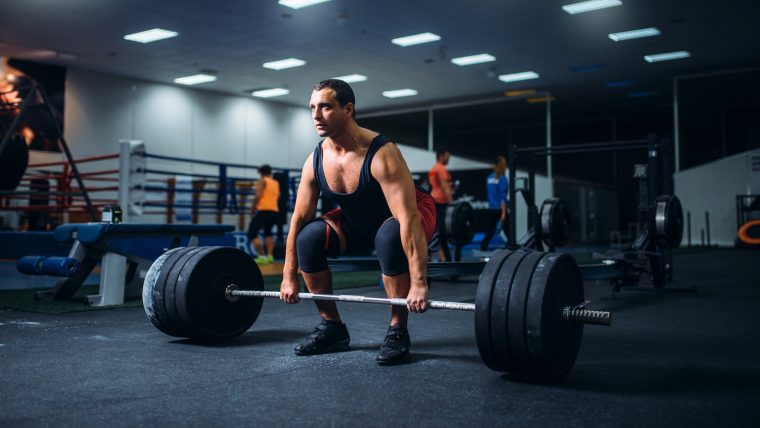
Moreover, bent-over rows may give you a leg up on the squat and the bench press. Creating your traps will create a stronger shelf for the bar to relaxation on — a serious benefit when squatting heavy hundreds. When it’s time to bench, having a powerful higher again will mean you can preserve a greater arch and stay secure as you decrease the bar towards your chest.
You Wish to Strengthen Your Posterior Chain
A weak posterior chain can contribute to low again ache and poor posture. Though it’s a little bit of a double-edged sword, the bent-over row may help you in that space by strengthening key muscular tissues like your spinal erectors and hamstrings — each of that are recruited closely to stay in a powerful hip-hinge place.
In keeping with a 2021 overview on therapy for continual low again ache, 12-16 weeks of posterior chain resistance coaching had a considerably better impact than basic train on ache, stage of incapacity, and muscular power. (1) So, whilst you shouldn’t attempt to max out on the bent-over row for those who’re making an attempt to construct a wholesome posterior chain, you possibly can actually incorporate it right into a program that features fundamental core exercises like lifeless bugs, hen canine, and planks.
You Wish to Add Total Dimension and Power
If rising a thick, dense wall of muscle alongside your again issues most, make the bent-over row the principle elevate in your pull day. A 2009 research evaluating three row variations discovered that this train produced giant activation symmetrically from the higher to decrease again, supporting the concept of the bent-over row as a go-to motion for including dimension and power. (2) Total, a compound motion will contain extra muscle engagement than an isolation train just like the chest-supported row.
Tips on how to Do the Chest-Supported Row
To carry out a chest-supported row, you will want a pair of dumbbells and an adjustable weight bench. Altering the incline stage (in addition to your grip) can alter the way you assault your again exercise by stimulating particular muscular tissues.
Right here’s a step-by-step information to executing the chest-supported row with the proper method.
- Set your bench to a 45-degree angle. Seize your dumbbells and lie chest-down on the bench with the weights by your sides and your palms going through inward.
- Press your ft into the ground, have interaction your glutes, and brace your core to create rigidity all through your torso.
- Whereas sustaining a impartial backbone and head angle, retract your shoulder blades and pull your elbows towards the ceiling till they kind a 90-degree angle.
- Squeeze your upper-back muscular tissues on the high of the motion for one to 2 seconds, then fastidiously decrease the weights again to the beginning place. Hold constant rigidity in your abs to guard your decrease again as you full your set.
[Related: How to Do the Pendlay Row]
Tips on how to Do the Bent-Over Row
The bent-over row requires simply two items of kit: a barbell and weight plates. If attainable, use high-quality bumper plates so that you don’t have to fret about noise points. Whereas it’s also possible to carry out this train with a pair of dumbbells, this breakdown covers how you can do the standard barbell bent-over row.
Right here’s a step-by-step information that may make it easier to grasp the nuances of this compound motion:
- Stand behind a barbell along with your ft shoulder-width aside.
- Hinge on the hips by preserving your again straight and bending your knees barely.
- Seize the bar along with your fingers barely wider than your shoulders utilizing a pronated (palms-down) grip.
- Have interaction your glutes and core, deadlift the bar off the ground, and lean ahead to kind a 45-degree angle.
- Whereas preserving a impartial backbone, pull your elbows again till the bar touches your midsection.
- Maintain the contraction for one second earlier than slowly decreasing the barbell till your arms are prolonged and the load plates are simply above the bottom.
Advantages of the Chest-Supported Row
The chest-supported row affords loads of intriguing potential for lifters seeking to construct a powerful, outlined again. Let’s look at a couple of key advantages of performing this train.
Added Stability
The most important good thing about the chest-supported row is undoubtedly being able to coach your again with the built-in stability of a bench. That is nice for each novices and superior lifters who need to attain their power and hypertrophy targets with out having to study an advanced method or fear practically as a lot about core or lower-back limitations.
Takes Benefit of Unilateral Coaching
Versus bilateral workout routines just like the barbell bench press or the back squat, the chest-supported row permits you to assault either side independently. Unilateral training is useful in that it permits you to tackle any imbalances and removes the potential of one aspect shouldering extra of the load. Supersetting the chest-supported row with one other unilateral train like single-arm lat pulldowns can take your again exercise to a different stage.
Simpler Restoration
The less-taxing nature of the chest-supported row makes it simpler to recuperate throughout and after your exercise. This motion doesn’t demand practically the identical depth or total muscle recruitment as a compound train just like the bent-over row.
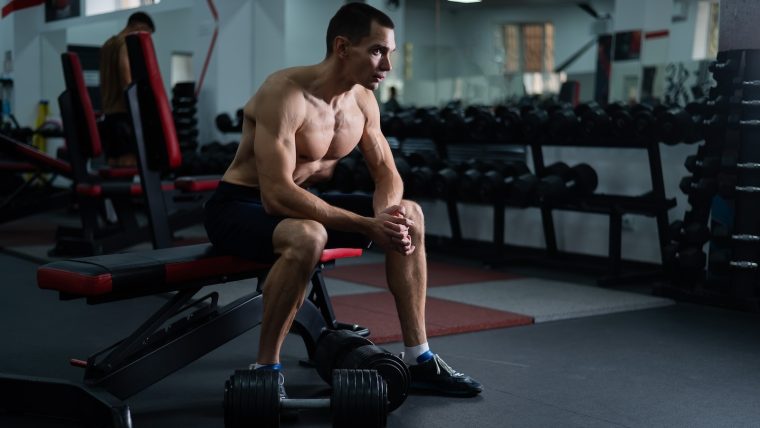
It is best to be capable to catch your breath, reset, and be able to go for a minimum of a couple of units earlier than shifting on to the following train.
Cons of the Chest-Supported Row
Though added stability and simpler restoration stand out as positives, there are some drawbacks to the chest-supported row, together with:
Requires Extra Tools
Sadly, for those who don’t have an adjustable weight bench, you gained’t be capable to carry out the chest-supported row. Plus, you want a pair of dumbbells (or kettlebells) that present sufficient of a problem. With out the requisite instruments, you’ll have to flip to different again workout routines that don’t require a bench (such because the inverted row) or will be carried out with out tools (like Superman holds).
Much less Total Muscle Engagement
There’s a tradeoff for extra stability: much less muscle engagement. Since you’re seated along with your chest in opposition to the bench, your core and legs get a little bit of a break. So despite the fact that the chest-supported row works nicely for hitting your lats, rhomboids, traps, and biceps, it falls in need of the bent-over row in what number of muscle teams it recruits.
Can’t Go as Heavy
The awkward physique place of the chest-supported row could make it harder to leap up in weight. Working at the usual 45-degree angle provides you adequate vary of movement to tug and squeeze, however solely to a sure diploma. Even for those who’re an skilled lifter with a stable power base, you’ll shortly understand it may be tough to manage heavier dumbbells and squeeze out clear reps.
Advantages of the Bent-Over Row
Whether or not you’re a bodybuilder, power athlete, or basic health club goer, the bent-over row presents a wealth of potential muscle- and strength-building advantages.
Carryover to Different Pulling Workouts
Whether or not it’s pull-ups, deadlifts, or the cable seated row, you possibly can put your self in a greater place to carry out nicely at different pulling workout routines through the bent-over row. Constructing power and endurance in your lats and traps will carry over to muscle-building workout routines like dumbbell pullovers, lat pulldowns, and face pulls.
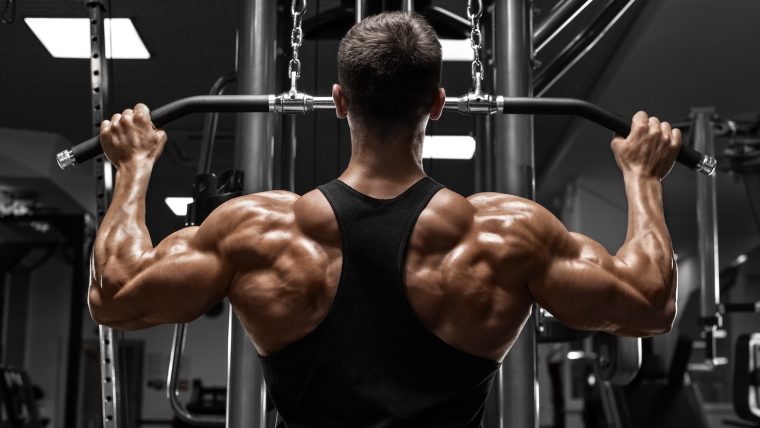
Plus, coaching your glutes, hamstrings, and core to deal with a rowing movement from a bent-over place provides you with a stronger trunk to deal with no matter deadlift variation you favor.
Compound Motion
In keeping with a 2017 research on resistance coaching modalities, multi-joint workout routines are simpler for enhancing muscle power and maximal oxygen consumption than single-joint ones. (3) That makes one thing just like the barbell bent-over row a fantastic bang-for-your-buck alternative to your coaching protocol. Not solely does it construct upper-body power, but it surely additionally stimulates your belly and leg muscular tissues from begin to end.
Improved Posture
A sedentary way of life can result in slouched shoulders, weak spinal erectors, and disengaged glutes. The bent-over row may help counteract that by permitting you to strengthen your posterior chain. As you progress, you shouldn’t be shocked to see an enchancment in your posture and a discount in decrease again points.
[Related: 6 Deadlift Benefits Everyone Should Know About]
Cons of the Bent-Over Row
Is the bent-over row the proper pull-day motion for you? Earlier than you pencil it into your program, listed below are some cons to think about.
Damage Danger
Though it may be nice for creating explosive energy and upper-back power, the bent-over row will be harmful if performed incorrectly. Sustaining correct kind is usually a main problem, as you will need to cohesively coordinate a number of muscle teams and joint complexes to mean you can maintain a loaded hip-hinge place at some stage in your set.
Only a slight slippage in kind — comparable to rounding your decrease again or barely shifting your hips to 1 aspect — can result in a strained muscle, ligament, or extra extreme harm. Whether or not you repeatedly carry out the bent-over row incorrectly otherwise you simply lose focus for one rep, you run the danger of experiencing a setback that would derail your coaching plans.
Grip Power Limitations
When you’re taking the glass-half-empty view, one of many drawbacks to the bent-over row is that your grip power is a limiting issue. In case your forearms and fingers can’t deal with holding, lifting, and decreasing a loaded barbell repeatedly, you’ll wrestle to execute the motion successfully or effectively. This may also be the case with the chest-supported row for those who use heavy dumbbells.
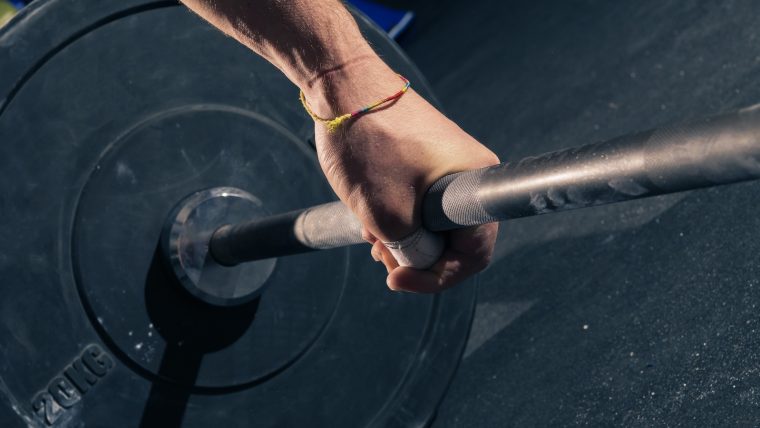
You possibly can overcome this downside by constantly engaged on grip strength exercises or utilizing lifting straps for assist. Whereas the previous will make it easier to get higher at bent-over rows and different lifts that require good grip power, the latter will allow you to work with heavier hundreds by preserving your fingers securely mounted to the barbell.
Demanding on Decrease Again and Core
Compound workout routines just like the bent-over row basically put your whole physique to the check. Whereas there are actually advantages to recruiting a number of muscle teams in a single motion, your coaching session can shortly go south for those who don’t have a well-developed core.
Hinging on the hips and remaining in that near-horizontal place whereas pulling the load vertically locations important stress in your decrease again and belly muscular tissues. As soon as fatigue units in, chances are you’ll wrestle to maintain the proper kind or should put down the barbell solely.
Utilizing Momentum
Whereas the chest-supported row forces you to make use of correct kind by preserving your chest in opposition to the bench, the freestanding place of the bent-over row opens the door to utilizing momentum to elevate the load. When you go too heavy, get fatigued, or lose focus, it’s straightforward to cheat the following reps by swinging or jerking the barbell relatively than sustaining rigidity and executing strict, managed reps. Not solely will this restrict the effectiveness of the train, but it surely may additionally result in an harm.
Row Until You Develop
The battle between the chest-supported row vs. the bent-over row doesn’t essentially have a winner or a loser. Each workout routines supply distinctive advantages that may help with sculpting the again of your goals. On the similar time, there are notable variations between the 2 rowing variations that may make one or the opposite a extra logical alternative based mostly in your particular person targets.
Finally, your greatest wager is to incorporate each the chest-supported and bent-over variations in your exercise plan. That manner you possibly can pack severe dimension in your body, develop higher posterior chain and grip power, and reap all of the rewards of rowing — one pull at a time.
FAQs
As a result of every variation brings distinctive advantages, it’s powerful to say one is inherently higher. Nonetheless, for those who’re targeted on gaining probably the most dimension and power, the bent-over row is the superior alternative. That stated, the chest-supported row continues to be helpful for coaching your upper- and mid-back and is usually simpler to carry out, making it a stable possibility for novices.
Regardless of their title variations, each describe the identical train. Whether or not you name it a chest-supported row or an incline row, you will want an adjustable weight bench and a pair of dumbbells to assist your back-building efforts.
The perfect physique place for a bent-over row requires a ahead lean of about 45 levels. Though you possibly can go a bit of additional (round 60 levels is my desire), hinging your hips to 90 levels will put extra stress in your posterior chain and will make the train harder to carry out repeatedly.
References
- Tataryn, N., Simas, V., Catterall, T., Furness, J., & L. Keogh, J. W. (2021). Posterior-Chain Resistance Coaching In comparison with Common Train and Strolling Programmes for the Therapy of Power Low Again Ache within the Common Inhabitants: A Systematic Evaluate and Meta-Evaluation. Sports activities Medication – Open, 7. https://doi.org/10.1186/s40798-021-00306-w
- Fenwick CM, Brown SH, McGill SM. Comparability of various rowing workout routines: trunk muscle activation and lumbar backbone movement, load, and stiffness. J Power Cond Res. 2009 Mar;23(2):350-8. doi: 10.1519/JSC.0b013e3181942019. PMID: 19197209.
- Paoli, A., Gentil, P., Moro, T., Marcolin, G., & Bianco, A. (2017). Resistance Coaching with Single vs. Multi-joint Workouts at Equal Complete Load Quantity: Results on Physique Composition, Cardiorespiratory Health, and Muscle Power. Frontiers in Physiology, 8. https://doi.org/10.3389/fphys.2017.01105
Featured Picture: Jasminko Ibrakovic / Shutterstock
Trending Merchandise

FITINDEX Vibrating Foam Roller 5-Speed, Next Generation Electric Foam Roller for Muscle Relax, Fitness Deep Massage Foam…

Resistance Bands for Working Out with Exercise Guide. Fabric Booty Bands for Women Men. Workout Bands Leg Bands for…

GAODI Women Waist Trainer Vest Workout Slim Corset Neoprene Sauna Tank Top Zipper Weight Loss Body Shaper

FITNE Green Tea Herbal Honey Lemon With Garcinia Senna Infusion Gentle Detox Cleanse High Antioxidant No Calories Stevia…

FITNE Black Currant Herbal Green Tea Fruity Garcinia Senna Infusion Gentle Detox Cleansing Boost Antioxidant Wellness…










